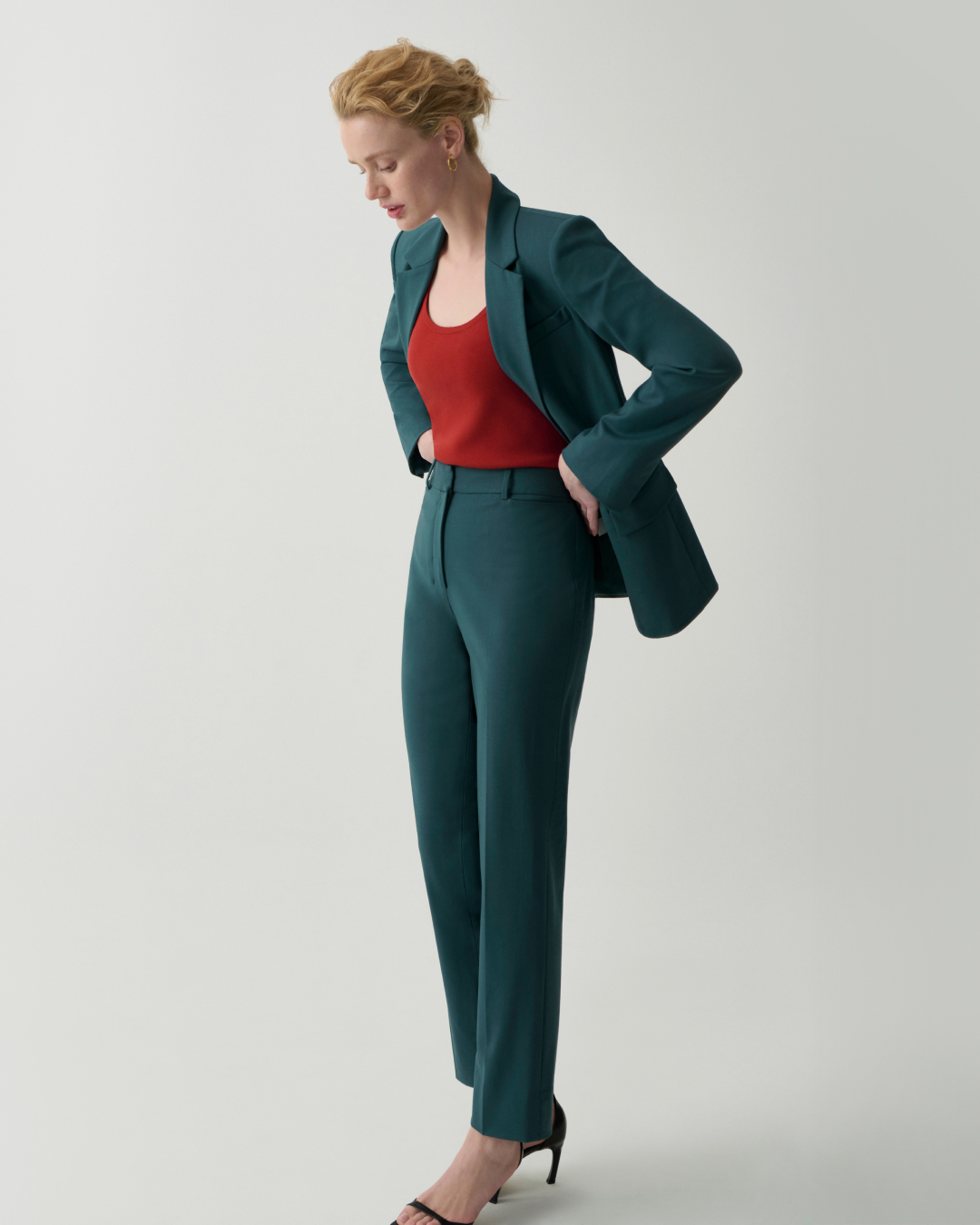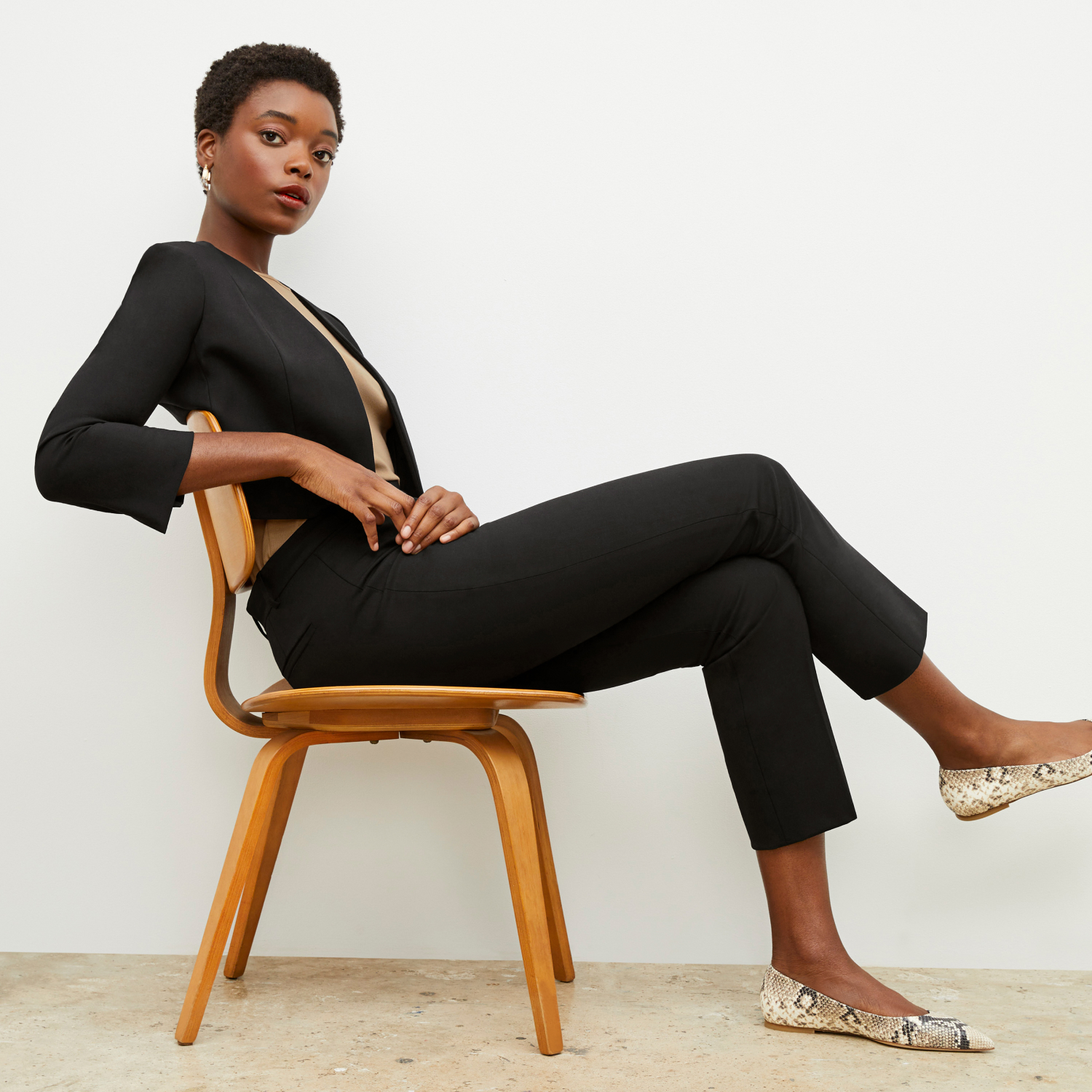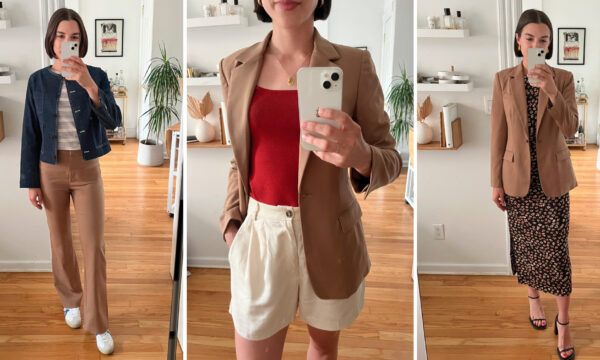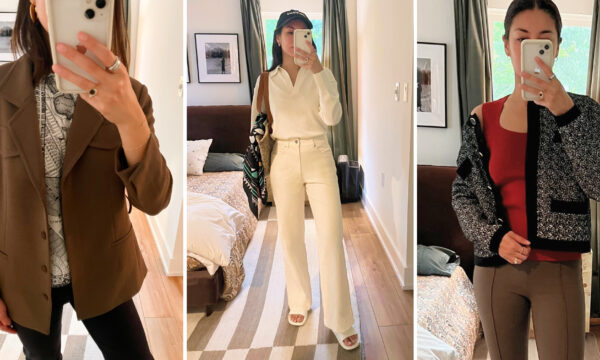
Shop This Look
How Should Dress Pants Fit? A Professional Stylist Weighs In
Where should the hem hit? When is tailoring worth it? Your questions are answered.
With the resurgence of dress pants—and increasing eagerness to wear them for work, weekends, and everything in between—our stylists have been fielding trouser-related questions left and right lately. With the help of Savanna, a veteran personal stylist and our Assistant Chicago Showroom Manager, we’re sharing their (extremely helpful) advice so it’s accessible to everyone.
Below, see your most common questions and our experts’ answers via Savanna, who has extensive experience in both the personal styling and professional tailoring industries.
Want more M Dash?
Sign up for our weekly newsletter.
Thank you!
How Should Dress Pants Fit? Answering Your FAQs.
1. How long should your dress pants be?
“It depends on the style! I like to talk in terms of pant breaks; ‘break’ refers to how your pant leg falls and folds, ‘breaking’ the drape of the pant as it touches the top of your shoe.
If you’re on the taller side, a wider, longer silhouette (like the Horton) with a full break is your best option. A full break means that there’s enough fabric to cover most of the top of your shoes, but the hem doesn’t drag either. You’ll notice that the fabric ‘pools’ around your shoe a bit. Working at our Chicago store, I sometimes hear ‘this looks too long!’ from customers whose style leans more traditional, so if your personal preference is to have less volume at the bottom of your pant leg, you can remove an inch or two of length for a half break (also called a slight break). A half break is characterized by revealing more of the shoe without exposing the ankle.
If you’re of average height (5’2” to 5’5”), straight-leg or tapered styles (like the Smith or Mejia, respectively) are my go-to recommendations, and a half break is ideal for you.
Last but certainly not least, if you’re petite (under 5’2”), I encourage you to try out slim styles (like the Skinny Foster) if you’re worried about overwhelming your frame. You’ll want to remove the extra fabric length so there is zero pooling at the ankles, a.k.a. no break. The shorter you are, the more you should err on the side of a shorter pant length versus what is traditionally suggested for someone of average height. A full break plus a flared leg is likely to result in a slouchy look that makes you appear shorter than you are.

Some other things to bear in mind:
- Regarding cropped cuts: Traditionally, a cropped style means the hem falls right at the ankle (often the slimmest part of your leg, just above your ankle bone). It’s important to note that shorter hemlines will lean more casual.
- Regarding culottes and kick-flares: When we talk about culottes and kick-flare styles, these hemlines look best when they hit about two inches above the ankle.
- Regarding shoe pairings: Check out our pants and shoes guide!
Disclaimer: Anyone can wear any silhouette they want to wear! These are just my tried-and-true recommendations if you are looking for what tends to appeal to the widest range of wearers or are wading into dress pant territory for the first time.”
2. Where should dress pants sit on your waist?
“When fitting clients for suit pants, I often see them gravitating toward a trouser fit that sits low on the waist and close to the hip, like a casual jean. This fit puts them more at risk of a slouchy look in the crotch area and can, therefore, turn them off from an otherwise great pair of pants. In turn, most of our trouser styles are high-waisted, which looks more reliably polished (and elongates your silhouette!).
In the case of high-waisted silhouettes, your pants should fit so that the top hits just above where you would take your waist measurement, otherwise known as your ‘natural’ waist. This is usually where your torso is most narrow. It’s important to note that for ‘round’ or ‘straight’ body types, it can be difficult to determine where your natural waist is located. Generally, your natural waist is below your rib cage and above your navel. For mid-rise styles like the Colby or Mejia, the waistband should sit on your natural waist.”

Dress Pants Sizing
3. What are some signs you should size up or size down?
Size down when:
- “There’s excess fabric in the calves to the point that it gives the trousers a heavy or slouchy look.
- You can easily fit your hand inside the waistband. You want the waistband to be flush against your body but not so tight that you can’t bend over or sit comfortably.
- There’s conspicuous bunching in the lap. Most of my clients are a little ‘crotch-conscious,’ if you can’t tell! I like to remind them that the fabric will move with your body, and minimal gathering is a normal part of wearing trousers. That said, significant creasing is a sign of too much room in the rise of the pant.”

Size up when:
- “You ask yourself, ‘Could I eat pasta in these?’ and the answer is no. If sitting down in your trousers makes you wonder whether or not you could have an indulgent meal and still be comfortable, you should likely size up.
- Your pants are a little too flattering in the back. If you’re concerned about your derrière stealing the show at the office, one size up will provide some extra coverage.
- There’s tightness at the calves. If your trousers are constricting you below the knee, it’s a sign of healthy muscles in need of a roomier size.”
4. Which fit issues indicate that an item is not the right size or silhouette for you?
- “The fabric is pooling or stretching significantly in a way that can’t be addressed with a simple alteration.
- Your mobility is restricted.
- You look significantly shorter than you are.
- You feel matronly, or conversely, immature.”

5. Which types of issues can be easily addressed by a tailor?
Hem adjustments:
- “Everyone is familiar with the concept of hemming, but you can also lengthen a hem by several inches, depending on how much extra fabric (or ‘hem allowance’) the pant has. Luckily, we design most of our trousers with extra hem allowance to accommodate a wide range of heights.”
Letting out or taking in the waistband:
- “Similar to letting out hems, you can let out the waist by as many inches as there is excess fabric at the back seam. If you’re getting the waist taken in, don’t take in more at the waist than would equate to the next size down, as it will drastically change the fit and shape of the pant. At that point, just try the next size down.”












